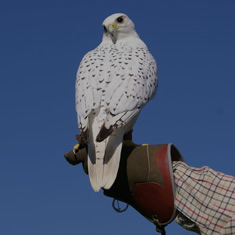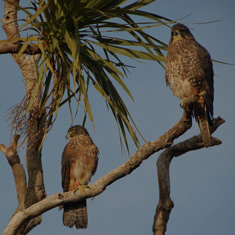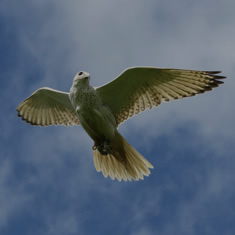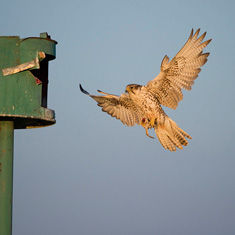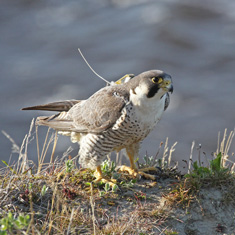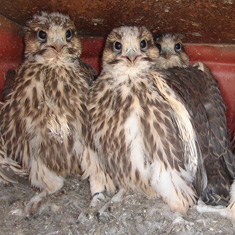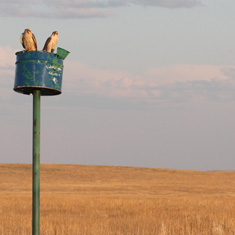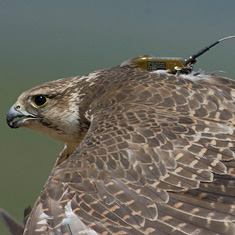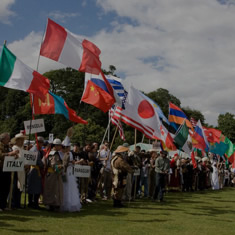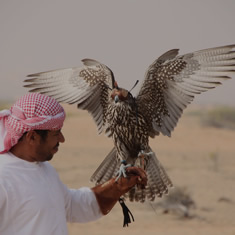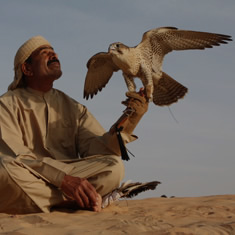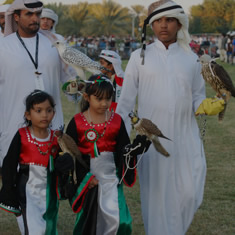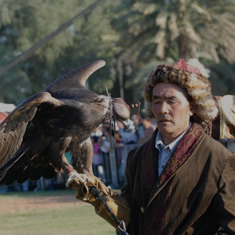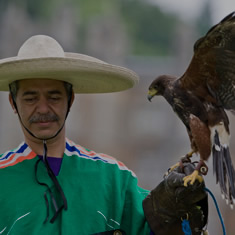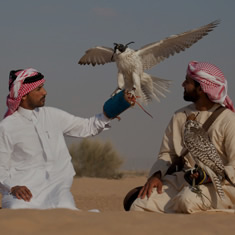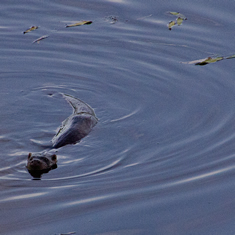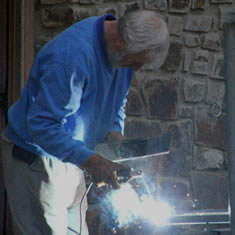- RAPTOR REGISTRATION
HAWK BOARD RESPONSE TO THE DETR REVIEW OF BIRD REGISTRATION AND CITES LICENSING
25 July 2000
The Hawk Board was informed of this review 18 months ago and made strong representation to the DETR on these issues last year including an 1800 signature petition. We are still awaiting the DETR’s response to our points, and the current draft review does not address the key issues.
In the 1980’s when raptor populations in UK were at a low ebb due to pesticides, and domestic breeding was in its infancy, we accepted registration as appropriate. Almost twenty years later most wild raptor species in UK are at saturation and there are huge populations of domestic birds. Several species, such as the sparrowhawk, kestrel and buzzard have been removed from registration without any perceptible negative impact on wild populations.
The DETR is concentrating on the financial aspects of registration but has not demonstrated the conservation benefits or targets of its proposals. We do not accept this lack of accountability.
Therefore we are calling for the DETR, as proponents of registration, to provide scientific impact statements for each of the species for which it proposes to levy registration fees. As end-users we expect these conservation benefit statements :
1. To be prepared by properly qualified scientists using current data on both wild and captive populations and showing statistically the conservation targets proposed by the DETR for each species over the next five years.
2. To demonstrate clearly that the keeping or trade of each species in domesticity has a significant real detrimental impact on wild populations.
3. To demonstrate clearly in any examples in which negative impact is shown, that the acts were not already illegal under other legislation and that registration, as an additional layer, would be necessary to cover these.
4. To demonstrate clearly that registration is the most cost-effective way to reduce this impact.
5. To demonstrate that other measures, such as a simple ringing scheme backed up by DNA testing, will not be more cost-effective than registration.
6. To demonstrate that other factors affecting wild populations, such as persecution, are receiving attention in proportion to their significance and that legal end-users are not being discriminated against by registration.
7. To demonstrate clearly that non-raptor organisms are receiving attention to their conservation needs in the same proportion as raptors are.
8. To show how monitoring of the programme will be carried out in order to show whether the programme is achieving its conservation targets or not.
9. To provide a financial statement each year of the fees paid by end-users
10. Where fees are being imposed on DETR via CITES or Europe, we expect the DETR to obtain similar conservation benefit statements from those organisations before imposing them on end-users.
In the event that the DETR raises fees without providing conservation benefit statements for each species, the Hawk Board will withdraw its support for the schemes. Under European legislation we expect the DETR to meet legal standards of accountability and non-discrimination.
COMMENTS FROM THE HAWK BOARD TO DEFRA ON PROPOSED CHANGES TO REGISTRATION OF DOMESTIC RAPTORS
27 October 2001 edition
These comments were first made to DETR on 12 May 1999. Since then we raised a petition at the Falconers Fair in 1999, we faced proposals to raise fees (proposals currently scrapped) and through a series of subsequent meetings and reminders, DEFRA has yet to tackle the issue. We are therefore pushing ahead with our efforts to get a level playing field for hawk-keepers and a cost effective control system that will benefit both wild and domestic raptors across Europe.
The Hawk Board Proposals for a revised Registration Scheme are given here.
1. Background
1.1. Falconers have promoted legislation protecting wild raptors for over 500 years, long before any other conservation groups even came into being. To this day we still deplore any unnecessary killing of birds of prey and have actively supported protection legislation.
1.2. Falconers, through the clubs, through the Hawk and Owl Trust, and through centres, have actively participated in conservation of wild raptors, particularly the Goshawk, the Red Kite and the Barn Owl. They have also provided educational material through a variety of routes, promoting raptor conservation.
1.3. Falconers and volunteers have successfully re-habilitated and returned to the wild many thousands of injured birds of prey.
1.4. Falconers voluntarily ceased applying for licences to take raptors from the wild for falconry and, over the past 20 years, have successfully domesticated the species required for falconry. The last licence to take from the wild for falconry was in 1988 and falconry is now fully self-sustaining using domestic raptors.
1.5. Whereas in 1980 when the Wildlife and Countryside Act was going through parliament only a few raptors were being bred in captivity, now many thousands are bred every year and this was not foreseen in the Act.
1.6. Since 1981, through the Hawk Board, hawk-keepers have actively co-operated with the DOE, DETR and now DEFRA, to promote the Wildlife and Countryside Act and other relevant legislation. We have provided advice and co-operation to enable inspections to be carried out. Some members have been voluntary Wildlife Inspectors. We have fully supported the development of DNA tests, including providing both blood samples and support funding. Many of the prosecutions were obtained as a result of information provided by the hawk-keeping fraternity.
1.7. Since 1981, wild raptor populations in UK have returned to good health and for many species have now reached their biological ceiling. Britain now contains perhaps the densest population of resident Peregrines in the world. The populations of Golden Eagles and Merlins are near their habitat carrying capacity. The Goshawk, re-introduced by falconers in the 1970s, is now widely established in Britain and in places is now habitat limited.
1.8. The factors which caused the decline of British raptors were not falconry. Shooting and persecution eradicated many populations in Victorian times and continue even now to be a factor depressing some local populations, such as Hen Harriers. Pesticides were a major factor decimating some of our raptors in the 1960s. Although thousands were killed or rendered unproductive, the UK Government did not make a single prosecution.
1.9. The government agencies and the RSPB all agree that the number of birds of prey taken from the wild illegally by British hawk-keepers is insignificant. Most of the direct persecution has been shooting, poisoning, egg-collecting and some thieves from the Continent. It is unlikely that any more restrictions will reduce this rate beyond the existing minimal level.
1.10. In recent years, although wild raptor populations have largely recovered from pesticides and although very few raptors have been taken illegally from the wild, there has been a disproportionate emphasis within the DETR and within law enforcement organisations on birds of prey being taken into captivity. About 95% of the DEFRA Wildlife Inspectors workload, and of PAW and a large percentage of UK CITES, is spent on raptors. This has reached the point where raptor keepers are being unfairly discriminated against.
1.11. As a result of the huge amount of paperwork and regulations now imposed by UK, EU and CITES, it has become extremely difficult to comply with such a mass of controls. We have a situation now where the ‘crimes’ are not actual wildlife crime per se, but are failures to cope with all the regulations. We note also that in a significant number of cases DEFRA has itself failed to comply with its own paperwork requirements.
2. Attitudes towards conservation benefit.
2.1.The UK, EU and CITES authorities all support the domestic breeding of raptors as a form of sustainable use tending to reduce pressure on wild populations. However their efforts, far from encouraging domestic breeding, are impeding it, thus encouraging some overseas end-users to turn to wild-source birds from countries with fewer controls. The authorities thus lose the good-will of legitimate breeders and traders.
2.2. In the enthusiasm to fight ‘wildlife crime’, which has good media appeal, organisations are losing sight of the major significant biological factors controlling wildlife populations. For most species of British wildlife, taking live specimens from the wild is biologically negligible. Resources spent detecting it are largely a waste of taxpayers’ money. A case recently involving a male goshawk involved considerable police resources for no significant gain for the species.
2.3. The onus is on DEFRA to demonstrate to Government the conservation benefit of their resource use. At a time when many of our invertebrate and small vertebrate populations are being progressively eradicated through the use of pesticides and detrimental land use practices, when mink have been released to the wild in huge numbers without prosecutions being made, when domestic cats are being allowed to kill 300 million small mammals and birds, many of them protected species, and when cats are being deliberately released to the wild and are interbreeding with the Wild Cat, when both our salmon and our coastal fisheries are in desperate straits, how can DEFRA possibly justify spending so much resources on domestic raptors? It appears that Hawk-keepers are being discriminated against.
2.4. It is time for DEFRA, in consultation with JNCC and other organisations, clearly to assess genuine conservation priorities. Most of these priorities are not currently wildlife ‘crimes’, as covered by the 1981 Act. The new Countryside Bill, or the revised Wildlife and Countryside Act, must address the real issues, rather than focus resources on an old-fashioned protectionist approach which has little or no conservation benefit. From the scientific point of view it is unlikely that all the prosecutions under the 1981 Act concerning birds of prey have had any biological benefit at all on raptor populations. It has been a complete waste of time and money. Conversely it is scandalous that the real large-scale culprits, such as pesticide manufacturers and oil carriers, have evaded prosecution. It is essential that the new Act goes to the real causes rather than focussing on peripheral cosmetic action with little real wildlife benefit.
2.5. In 1981, many raptor populations were still depressed from pesticides, only low numbers of raptors were being bred in captivity and prices were high. In 1999 wild raptors (of falconry species) are flourishing, shooting and pigeon racing interests are calling for legal controls, many thousands of raptors are bred in captivity and prices are so low that many breeders are finding it uneconomical. The motivation to take raptors from the wild is now minimal. The commonest occurrences are approaches from gamekeepers who are threatening otherwise to destroy the broods. We now have an effective close-ringing system and a DNA method for establishing provenance. Thus registration is now a waste of resources.
2.6. In 1995, all but a few raptor species were removed from registration. This did not result in any detectable increase in taking kestrels, sparrowhawks or buzzards from the wild. Now it is time to remove the remaining species from registration and stop unnecessary duplication of paperwork.
3. Costs.
3.1. The DEFRA spends about £718,000 pa on CITES licensing and bird registration. The user groups probably spend more than this in time and money spent implementing the requirements of the schemes. The total cost of the schemes is therefore in the region of £1.4 million.
3.2. The Treasury requires DEFRA to recover the whole cost of these schemes. Hawk-keepers are no longer prepared to fund these schemes because:
3.3. The schemes provide no appreciable benefit either to the domestic birds or to their owners.
3.4. The schemes provide no appreciable benefit to wild birds.
3.5. With an annual turnover of £718000, the DEFRA would become the largest commercial user of domestic raptors, employing several staff. The system is in danger of becoming self-justifying.
3.6. The conservation problem, if there is one, lies with wild birds, not domestic ones.
3.7. Breeders and keepers of domestic animals are not prepared to be financially penalised for the sake of wild birds which do not belong to them nor have any immediate relevance to them. Domestic raptors are not wild ones and this needs to be clearly defined in the revised Wildlife and Countryside Act.
3.8. The schemes do not provide any form of service to hawk-keepers, they are purely an imposition.
3.9. From the differences in fees, it appears that hawk-keepers are subsidising keepers of other species who are charged less pro rata.
3.10. Our proposals would reduce DEFRA expenditure to a minimum and remove imbalances and confusions between English, Scottish and Welsh registration authorities.
4. CITES.
4.1. Classification of species in the CITES Appendices and the European Annexes.
It is clear that many raptor species do not fulfil the criteria for their current listings. To maintain that the Peregrine is an endangered species simply brings CITES listing into disrepute; it is crying wolf. It is time for the EU and for CITES to strictly review their listings and put conservation effort into truly endangered species – there are plenty of them – and to remove the resources being loaded onto species which are being used as political pawns. There is inconsistency even within raptors - for example the difference between the ways Barn Owls are treated compared with Peregrines.
4.2. The differentiation between commercial and non-commercial. The CITES Secretariat has defined this but the UK CITES authority disagees with the Secretariat’s definition and interprets it far more restrictively. Clearly zoos and the DEFRA receive significant income from captive raptors and their financial benefits would be challenged by commercial breeders who at least make money by producing, rather than by exhibiting or licensing.
4.3. CITES certificates. Like registration, CITES is in many instances penalising legal traders while failing to achieve real conservation benefit or to properly impact on illegal routes. UK is also penalising itself by putting in unnecessarily time consuming controls. It should aim to get all the major traders properly CITES registered and reduce costs and paperwork. CITES is not at all run as a level playing field in Europe and disillusioned UK traders are increasingly tempted to use other EU countries instead.
4.4. There is no proper EU CITES passport system in place and traders are constantly being asked for information by their own authorities on trading conditions in other EU countries. If UK plans to charge for CITES certificates, then traders have every right to expect that the documents are fully legal tender throughout the EU and written in the appropriate languages as part of a fully co-ordinated scheme. At present we have no confidence that this is being done. Some countries, such as Germany, do not charge for registration and thus UK breeders are commercially disadvantaged.
5. Layers of legislation.
5.1. With the partial devolution of Scotland and Wales we are faced with four layers of legislation, all of which are or will be defective:
5.2. International law. CITES is defective because it is not impartially administered in a standard system throughout the signatory countries. Some western nations, particularly UK and USA, have become totally obsessive over CITES and set standards which are impossible for other nations to follow. These other nations, many of them Third World countries with few financial resources, few skilled personnel, wealthy wildlife resources and extensive land boundaries, have no hope of fulfilling the criteria demanded by the more strident western nations. Inevitably CITES is paid only lip-service in these places, while other countries have not even signed up at all. To have meaningful conservation benefit CITES must, in the next millennium, concentrate its efforts not on tighter and more convoluted restrictions, but on developing a broad international system that actually works. Our proposals are in line with this.
5.3. EU wildlife legislation has fallen into the same pitfalls as CITES. There is gross distortion in the interpretation and administration of the legislation between member states, and a failure to communicate adequately or to produce pan-European documents. Some countries are applying border controls against the spirit of the EU, if not against EU law. In some cases no proper provisions have been made for local differences.
5.4. UK legislation on raptors has become obsessive. Instead of raptors being managed on a sound scientific basis, they have become political pawns, subjects of irrational and emotive pressure. When people, such as gamekeeepers, can no longer see the sense in a law, they will flout it and this is resulting in raptors being killed illegally in the absence of any legal valve to relieve the pressure. This is rapidly resulting in a conflict which, unless tackled on sound scientific principles, is going to bring the law into disrepute.
5.5. Local Scottish, English, Welsh or Irish law. As these layers are added we are going to see minor bureaucrats administering wildlife controls, advised by scientist with little specialist knowledge of the subjects. Few have a wide perspective of wildlife conservation issues and priorities and their decisions will be reflected in this. Additionally there will be widespread confusion amongst end-users about which elements of this four-tier system are administered by which authority.
6. Movements.
6.1. CITES assumes quite wrongly that movements between countries always involves a change of ownership and a financial trade. In the case of raptors, many international movements, a large proportion of internal EU movements, and the vast majority of inter-UK movements do not involve trade. We are told that sensitive raptors can be brought into UK but then must be registered according to our system. To do this in the context of a short hawking holiday, possibly driving through England in transit to Scotland, is clearly impractical, particularly if the owner has no fixed address. Our proposals circumvent this difficulty.
7. Enforcement.
7.1. There are many thousands of domestic raptors in UK. They are legally classed as private property and have nothing to do with the wild bird population. Their numbers are increasing. Their unit value is decreasing. While some police and other law enforcement agencies have been assiduous in their efforts to prove that a bird has been taken from the wild, they have not shown such eagerness to investigate when a domestic raptor has been stolen, nor have they been very prepared to provide resources to track down the illegal killing of raptors. Local police have little time to try to understand the mass of documentation now surrounding raptors and it would be easy for us to ridicule this whole paperchase in the media. Put simply, if the hawk-keepers decide not to use Article 10 certificates, there is nothing that the DEFRA can do about it. In a situation where enforcement is impractical, maintaining the goodwill of the end-user is essential.
8. Article 10 certificates.
8.1. These have been imposed on us recently under EC Council Regulation 338/97 because Britain was outvoted by several other countries which do not have large populations of domestic raptors. The DEFRA now have the data revealing the scale and cost of this scheme, data which they can use to go back to Brussels and get the ruling removed. By preparing a signed petition and by writing letters to MPs we propose to make it clear both to DEFRA and to Brussels that Article 10 certificates for the UK internal market are not a viable option. As domestic birds, our raptors should fall outside the requirements for Article 10s.
Annex A Captive Bred birds are treated as Annex B thus any captive bred bird can be classed under regulation 338/97 as domestic bred.
We are not proposing an end to controls. Rather we are proposing an increase in controls but a decrease in paperwork: However we are encouraging greater responsibility and accountability for both the government and raptor keepers.
1. All domestic bred raptors of all species (including owls) should wear a numbered closed ring at all times, regardless of whether or not they are to be sold. This is the major evidence that the bird has been bred in captivity and can thus be classed as domestic as by the precedent adopted in the case of the domestic pigeon Columbia livea and the domestic french goose.
This could be done under the regulations of the WCA 1981 and will bring consistency with council regulation 338/97. We feel that a government managed system gives credibility to captive breeding and the government.
2. All (Diurnal and Nocturnal) domestic raptors unless in possession of Article 10 or Article 30 must be accompanied by a signed Certificate of Captive Breeding, identifying the bird, the breeder and the bird’s mother, and father if known, as a UK Passport for life. This Certificate should be duplicated in a standardised form produced by DEFRA, (this could be the same format as the Article 10 on a different colour paper) and available from the Hawk Board. It would be valid for use in UK only and no central database would be maintained. It would be compulsory for the Breeders to provide this, retaining a permanent copy for their own records, when parting with a bird in any transaction, and it would be free of charge.
This could be achieved under the regulations of the WCA 1981.
3. All non-UK sourced raptors which do not wear an approved closed ring will not be classed as domestic in the UK.
This could be achieved under the regulations of the WCA 1981.
4. All regulations pertaining to wild-sourced raptors, remain as they are, under the WCA.
No change
5. Any domestic raptor which has had its closed rings removed, for whatever reason, should wear a fitted ring and/or be microchipped, and be registered with DEFRA, with a Registration Document if it is a Schedule 4 bird. Or be fitted with a ring, or microchip and that act be recorded and witnessed on the Certificate of Breeding if not a Schedule 4 bird.
6. EU Passports (Article 10 certificates) should not be required for parents of birds for which an application for an Article 10 is being made. Article 10’s should be obtainable at any time during a bird’s life using the Certificate of Breeding as the basis for application, as is done in the rest of the EU thus enhancing harmonisation.
7. Controls. All possessors would have to be able to show the closed ring and Certificate of Breeding, or Article 10, 30 or Registration Document and the ring should lead to the parent birds and if required, DNA evidence. This is a reasonable level of control for a domestic animal.
8. Traceability. All raptors should wear a ring, be it a split ring, tag or other means of meaningful identification, bearing the telephone number or address of the present owner/keeper, to enable them to be traced and returned if lost. With a telephone number and an individual ID number each bird can be rapidly traced to its owner. This is a vital and cost saving provision to all parties involved.
This could be achieved under the regulations of the WCA 1981 and could be enforced through the inspection system.
9. We are recommending the reduction of registration requirements and thus reducing costs. We insist that all animal and plant species should be harmonised with no discrimination against raptor keepers. Standardised charges should be implemented for all species.
Bird Registration Fee (section 7 of the WCA 81)
Registration/transfer of all bird species £10
CITES Licensing fee (Control of Endangered Species (fees) Regulations 97)
Import/ re export animal species
All applications £10 per species
Import/ re export plant and coral species
All applications £10 per species
Article 10 Certificates
All applications £10 per species
Other permits and certificates
Applications for Article 30 certificates £30
Applications for multiple permits or certificates for specimens of the same species
£1.00 for each document issued.
Waivers and refunds.
Refunds may be made in the case of overpayments or where the wrong fee has been charged, or where the specimen has been returned to the wild.
Comments from the Hawk Board on the RSPB submission on the DEFRA Registration Review. 18 November 2002.
Population numbers. In the case of the four species of major concern here, the peregrine, gyrfalcon, merlin, and goshawk , all are increasing or doing well, according to RSPB and BTO figures. Guy Sharrocks in his statement to Countryfile November 17th 02, claimed that there were only 1200 pairs of peregrines and they were therefore endangered. In reality there are about 1300 pairs of peregrines, more than at any time since surveys began. No reputable raptor biologist would claim that the British peregrine will expand much more than this, and nobody would claim that hawk-keeping is, or ever has been, a significant factor limiting the populations of any UK raptor. Sharrocks’ claim is a deliberate attempt to delude the public. On a world scale these four species have among the largest ranges of any birds and it is naïve to pretend that they could ever reach the densities of their prey species.
Convictions. We do not know how many prosecutions have been made in the last ten years of people taking wild raptors for hawk-keeping. We think it is about 14. This is not a significant number in this time frame, or with these populations. We do not know whether Registration was a significant factor in these prosecutions. We believe that the cheaper system we are proposing, backed with DNA, would be equally effective a method of control. The RSPB’s claim that 13% of the peregrines and 11.6% of the goshawks registered as bred in captivity in 1993 were actually illegal was based on 5 stolen peregrines and 2 goshawks!
Stealing from the wild. Guy Sharrocks claimed to ‘know for a fact’ that stealing from the wild would escalate without registration. He doesn’t. Statistically there is no evidence that since 1981 the illegal taking of UK raptors for hawk-keeping, or the efforts made to combat it, have had any significant effect at all on wild populations. It has all been irrelevant to the real biological factors.
The goshawk population was actually re-introduced by falconers from zero, at a time when there was no registration. Since then the numbers of the UK raptor species have increased, not because of decreased thefts, but because the real limiting factors, especially pesticides, eased. Meanwhile the huge success falconers have made in breeding these species has not only established, (starting from near zero) populations in captivity nearly as large as the wild populations, but is producing on an annual basis sufficient young to satisfy the market. This is a fundamental shift in population dynamics since 1981.
Fees. If registration was raised to £80 per bird, at least one breeder would be paying over £20,000 per year in fees alone. At today’s prices this is equivalent to 50 peregrines! How can these sorts of sums possibly be justified? Frankly it would be cheaper for breeders to offer to underwrite any birds stolen from the wild and replace them! On a national scale, if an innocent minority group is to be penalised to the tune of £1 million or so, then it is up to DEFRA to explain why the onus is on the innocent and not on the guilty, and how this huge investment is critical to the survival of wild birds – clearly it isn’t.
Controls. The controls that the Hawk Board are proposing are actually more extensive than current ones, and they are more restrictive than controls on any other captive or domestic animals. They are science based, not propaganda based. We are advocating a responsible and realistic approach. We do not expect the system to be 100% water-tight; nothing is in this world.
A web-based approach to registering the names of people in possession of listed species has its attractions in an ideal world. However the majority of bird-keepers are not on internet and the system would inevitably have to be a partly paper-based one, with documents produced by DEFRA corroborating that a person has, in fact, registered. One must bear in mind that of the registration errors occurring, a significant proportion (sometimes 50%) arise from DEFRA itself, not the Keeper. The RSPB do not have the practical experience in actually operating a registration scheme and does not understand the logistical aspects of the exercise. Nor are we in a static situation; numbers will continue to rise in the foreseeable future.
It is perhaps worth noting that the sole benefit of the RSPB’s proposed system over the Hawk Board’s proposed system is that it gives addresses of where registered birds are kept. This begs the question of how many birds stolen from the wild would be registered in UK anyway. With the opening of trade barriers across the EU it is likely that wild birds stolen in UK will be immediately exported to other EU countries. The Hawk Board has pushed for a long time for proper co-ordination across the EU. It seems that we are no further on with this and UK citizens are being penalised for living in what is effectively a bucket with a huge hole in the bottom. With devolution within UK itself, it seems we are in a huge administrative mess and the only real solution can be simplification.
Other Species. We are not experts on other species, but we believe that a science-based approach to listings would result in a number of rare parrot species requiring registration.
Comments from the Hawk Board on the RSPB submission on the DEFRA Registration Review. 18 November 2002.
Population numbers. In the case of the three species of major concern here, the peregrine, merlin, goshawk , all are increasing or doing well, according to RSPB and BTO figures. Guy Sharrock in his statement to Countryfile November 17th 02, claimed that there were only 1200 pairs of peregrines and they were therefore endangered. In reality there are about 1300 pairs of peregrines, more than at any time since surveys began. No reputable raptor biologist would claim that the British peregrine will expand much more than this, and nobody would claim that hawk-keeping is, or ever has been, a significant factor limiting the populations of any UK raptor. Sharrock’s claim is a deliberate attempt to delude the public.
Convictions. We do not know how many prosecutions have been made in the last ten years of people taking wild raptors for hawk-keeping. We think it is about 14. This is not a significant number in this time frame, or with these populations. We do not know whether Registration was a significant factor in these prosecutions. We believe that the cheaper system we are proposing, backed with DNA, would be equally effective a method of control.
Stealing from the wild. Guy Sharrocks claimed to ‘know for a fact’ that stealing from the wild would escalate without registration. He doesn’t. On the contrary, there is no biological evidence that registration ever had any significant benefit to the wild populations. The goshawk population was actually re-introduced by falconers from zero, at a time when there was no registration. Since then the numbers of these species have increased, not because of decreased thefts, but because the real limiting factors, especially pesticides, eased. Meanwhile the huge success falconers have made in breeding these species has not only established, starting from near zero, populations in captivity nearly as large as the wild populations, but is producing on an annual basis sufficient young to satisfy the market. This is a fundamental shift in population dynamics since 1981.
Fees. If registration was raised to £80 per bird, at least one breeder would be paying over £20,000 per year in fees alone. At today’s prices this is equivalent to 50 peregrines! How can these sorts of sums possibly be justified? Frankly it would be cheaper for breeders to offer to underwrite any birds stolen from the wild and replace them
Controls. The controls the Hawk Board are proposing are actually more extensive than current ones, and they are more restrictive than controls on any other captive or domestic animals. They are science based, not propaganda based. We are advocating a responsible and realistic approach.
Conservation and Research
- Raptor Conservation
- The Peregrine Falcon
- Mauritius Kestrel
- Red Kite Conservation
- New Zealand Falcon Conservation Project
- Migration and Movements of Saker Falcons
- Falcon Genome Project
- Electrocution of Birds of Prey
The Saker Falcon
- The Saker Falcon
- Description
- Taxonomy
- Breeding Distribution
- Breeding Population Estimates
- Wintering Distribution
- Habitat
- Hunting and Diet
- Breeding and Biology
- Migration
- Conservation Status
- Conservation Threats
- Sustainable Harvest
- Conservation overview (HH Sheikh Zayed)
- Captive breeding & research
- Bibliography
- Satellite Tracking
- Reintroduction in Bulgaria
- Reintroduction in Bulgaria
- Mongolian Artificial Nest Project Information
- Mongolian Artificial Nest Project Articles

